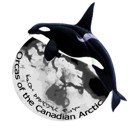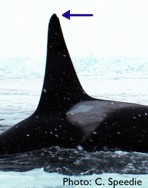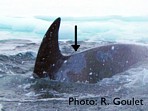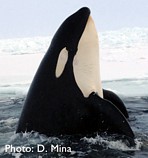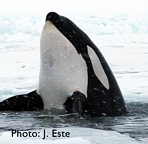Inukjuak Killer Whale Entrapment, January 2013
This winter, an unusual event occurred near Inukjuak, Nunavik (Quebec) when killer whales became entrapped in ice for several days, approximately 30 km northwest of the community. News traveled fast and many witnesses took amazing photos and videos.
See the Oceans North story: The Mystery of Hudson Bay's Trapped Killer Whales.
We would like to thank those who contributed to our photo ID efforts by providing copies to Kristin Westdal. Especially, Jeannie Nayoumealuk, Crystal Speedie, Davidee Mina, Jill Este, Mark O'Connor, Poasie Nappaaluk, and Raphaël Goulet. If anyone else has photos and video, please consider sharing them with us. By gathering as many photos as we can – especially of both sides of the whales – we increase our knowledge about Arctic killer whales.
